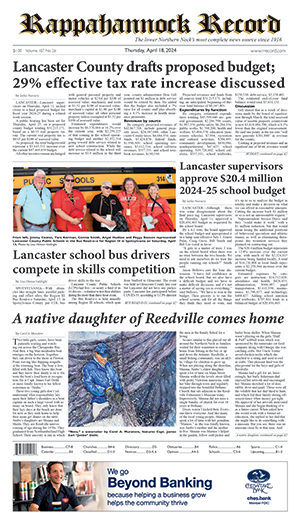by Robert Mason Jr.
Warning: The following column may not be suitable for those with severe peanut allergies.
“When I was young, I said to God, ‘God, tell me the mystery of the universe.’ But God answered, ‘That knowledge is for me alone.’ So I said, ‘God, tell me the mystery of the peanut.’ Then God said, ‘Well George, that’s more nearly your size.’ And he told me.”
— George Washington Carver (1860s-1943)
Now I don’t profess to know as much about peanuts as Carver, the botanist, professor, Tuskegee Institute Agriculture Department chairman, inventor and author of several bulletins for farmers, including “How to Grow the Peanut and 105 Ways of Preparing it for Human Consumption,” circa 1916.
But I do know March is National Peanut Month.
Here’s a little backstory for those who aren’t familiar with the goober. Botanically speaking, the peanut is actually a legume, but who are we to bicker over facts. Peanuts originated thousands of years ago in South America. Fast forward, they were a garden crop during colonial days. Take another 100-year leap and the crunchy, large kernel Virginia peanut was gaining a foothold in southeastern Virginia.
Carver was among the first to increase the potential of the peanut exponentially in the U.S. in the late 19th and early 20th centuries.
He was one of many U.S. Department of Agriculture researchers who suggested farmers plant peanuts to replace cotton fields destroyed by the boll weevil following the Civil War, as both a cash crop and an alternative crop for rotation practices. He invented or promoted more than 300 uses for the peanut, including the salted snack.
Carter also was influential in the 1922 adoption by the U.S. Congress of a tariff on imported peanuts. In 1920, he delivered a speech before the Peanut Growers Association, promoting the potential of the peanut. In 1921, he testified before Congress in support of the tariff.
Meanwhile, John Harvey Kellogg of cereal fame was issued a patent in 1898 for a “Process of Producing Alimentary Products,” including a paste made from peanuts. Kellogg served his peanut butter to patients at his Battle Creek Sanitarium in Battle Creek, Mich.
By 1928, chemist Joseph Rosefield invented a process for making smooth peanut butter and he licensed his invention to the company that created Peter Pan peanut butter. In 1932, Rosefield began producing his own brand, Skippy.
To celebrate National Peanut Month, the Virginia Peanut Board and Virginia Peanut Growers Association (VPGA) are working with Peanut Proud to contribute more than 10,000 jars of peanut butter to the Federation of Virginia Food Banks.
“Food banks always need peanut butter,” said Steve Berryman of Surry County, a fourth-generation peanut grower and member of the Virginia Farm Bureau Federation’s peanut advisory committee.
“Peanut butter is a good choice to donate to food banks, because it’s so high in protein and has a long shelf life,” said Berryman.
This is the sixth year Virginia’s peanut growers have donated peanut butter for the March celebration, said VPGA executive secretary Dell Cotton.
“Food banks’ No. 1 request for stocking their shelves is peanut butter,” said Cotton.
Peanut usage jumped 27% last year on strong demand for peanut butter and candy, according to U.S. Department of Agriculture figures. Record-high exports of U.S. peanuts are expected to continue.
I’m a Peter Pan creamy man. Hold the bananas, jelly, marshmallow cream and pickles. I like it plain on saltines, or slathered between two slices of bread. If I’m feeling really adventurous, I might add bacon.
Peanuts ain’t all bad. I’ll spare you all the nutritional details, you read the label.
Fans say peanuts may be useful in weight loss, probably because of the filling nature of a handful. They’re rich in protein, energy potential, dietary fiber, antioxidants, good fat and essential nutrients. Because they are high in calories and fat content, folks are reminded to consume large amounts sparingly.
Low in carbs, peanuts also have been linked to a reduced risk of cardiovascular disease and gallstone prevention.
I like peanuts roasted and salted in the shell. Occasionally, I’ll eat the shell and all. My family physician says the extra fiber probably won’t hurt me.
You can find peanuts canned, boiled, roasted, salted and spiced in a variety of flavors. There’s peanut oil, peanut flour, peanut protein, peanut liqueur, peanut beer, peanut-flavored vodka, peanut soup, peanut sauce, peanut milk, peanut candy, peanut cake and peanut pie; peanut dishes like pad Thai, kung pao chicken or chicken satay; and don’t forget chocolate covered peanuts.
Goobers pair well with baseball and football viewing live or in the recliner, around a campfire or with cold beer anywhere and with the reading of community newspapers.
The strictly Southern tradition of pouring peanuts into an ice cold bottle of Coca-Cola is believed to have originated around a woodstove or on the front porch of a country store in the 1920s as snack bags of Planters, Lance and Tom’s shelled peanuts hit the shelves—or in George Washington Carver’s lab.











